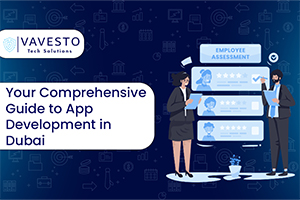
In the rapidly evolving landscape of digital innovation, one technology has emerged as a game-changer for businesses worldwide: the cloud. In this blog, we’ll unravel the intricacies of cloud technology, exploring its transformative impact on industries, its key components, and the myriad benefits that businesses can reap from embracing the cloud.
1. The Essence of Cloud Technology
a. Defining the Cloud:
The cloud is not an abstract concept; it’s a dynamic infrastructure that allows users to access computing resources and services over the internet. Gone are the days of physical servers and localized storage – the cloud brings agility and accessibility to the forefront.
b. Cloud Service Models:
Cloud services are typically categorized into three models: Infrastructure as a Service (IaaS), Platform as a Service (PaaS), and Software as a Service (SaaS). Each model offers varying levels of control and flexibility, catering to the diverse needs of businesses.
2. Key Components of Cloud Technology
a. Virtualization:
At the core of cloud infrastructure is virtualization, enabling the creation of virtual machines that run multiple operating systems on a single physical server. This maximizes resource utilization and enhances scalability.
b. Containers:
Containers provide a lightweight and portable solution for deploying applications. Technologies like Docker and Kubernetes have revolutionized the way applications are developed, tested, and deployed in the cloud environment.
c. Cloud Storage:
Cloud storage services such as Amazon S3, Google Cloud Storage, and Microsoft Azure Blob Storage offer scalable and cost-effective solutions for storing and retrieving data. This eliminates the need for on-premises storage infrastructure.
3. Transformative Impact on Industries
a. Enhanced Collaboration:
Cloud technology facilitates real-time collaboration, allowing teams to work seamlessly regardless of geographical locations. Tools like Google Workspace and Microsoft 365 exemplify how the cloud fosters teamwork and boosts productivity.
b. Scalability and Cost Efficiency:
Businesses can scale their operations up or down based on demand, optimizing resource usage and minimizing costs. The pay-as-you-go model ensures that organizations pay only for the services they consume.
4. Security in the Cloud
a. Robust Security Measures:
Cloud service providers implement stringent security measures, including data encryption, access controls, and regular audits. The cloud’s shared responsibility model ensures a collaborative approach to security between the provider and the user.
b. Compliance and Regulations:
Cloud providers adhere to industry-specific compliance standards and regulations, giving businesses peace of mind when it comes to data protection and regulatory requirements.
5. The Future of Cloud Technology
a. Edge Computing:
As the demand for low-latency applications grows, edge computing is emerging as a critical component of cloud technology. Edge computing brings data processing closer to the source, reducing latency and improving overall performance.
b. AI and Machine Learning Integration:
Cloud providers are integrating AI and machine learning capabilities into their services, empowering businesses to leverage data insights and enhance decision-making processes.
Conclusion: Soaring to New Heights with Cloud Technology
The cloud is not merely a technological trend; it’s a transformative force reshaping the way businesses operate and innovate. As we navigate the digital landscape, embracing cloud technology becomes more than a choice – it’s a strategic imperative for those seeking agility, efficiency, and a competitive edge in the ever-evolving world of technology. Whether you’re a startup, a mid-sized enterprise, or a global corporation, the cloud opens up a world of possibilities, propelling you to new heights in the digital era.







